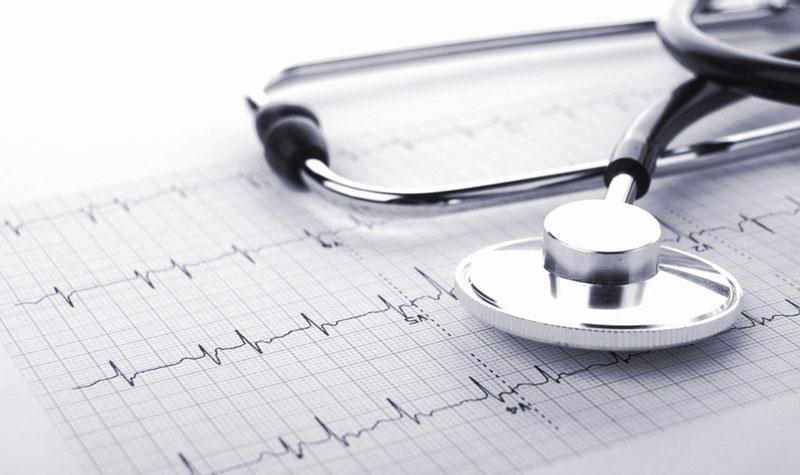
A wearable arrhythmia detection device, the AliveCor KardiaBand (KB), demonstrates moderate accuracy for diagnosing atrial fibrillation (AF) in comparison with a 12-lead electrocardiogram (ECG), as shown in a recent study. However, combining the automated device diagnosis with the electrophysiologists (EP) interpretation of unclassified readings improves overall accuracy.
Paired with a smartwatch, KB is a strap with an inbuilt electrode that allows it to function as a lead-Intelligent ECG (iECG). It takes advantage of the inbuilt smartwatch photoplethysmography to obtain a 30-second continuous recording, which can be viewed in real-time on a smartphone, and generate an automated diagnosis of either AF or sinus rhythm (SR).
The results of the present study suggest that “even with future improvements in automated algorithms … physician involvement will likely remain an essential component when exploring the utility of [wearable] devices for arrhythmia screening,” according to the researchers.
In the study, 200 patients (38 with AF and 162 with SR) contributed to a total of 439 ECG recordings, of which 239 were derived from iECGs and 200 were obtained via a 12-lead ECG. Repeat iECG was performed when an unclassified or no-analysis tracing was generated. [Heart 2020;doi: 10.1136/heartjnl-2019-316004]
Overall, initial iECG yielded 161 diagnoses (80.5 percent) of AF and SR. There were 14 tracings (7 percent) recorded as no-analysis and 25 (12.5 percent) as unclassified readings. A second iECG recorded a diagnosis in 14 out of 39 patients (7 percent), with the remainder being unclassified (8 percent) or no-analysis (4.5 percent). In total, 175 (87.5 percent) AF and SR diagnoses were obtained using up to two iECGs.
For diagnosing AF or SR, when including unclassified tracings marked as incorrect, KB had a sensitivity of 94.4 percent and specificity of 81.9 percent. The corresponding positive and negative predictive values were 54.8 percent and 98.4 percent. Agreement between the single-lead KB diagnosis and 12-lead ECG cardiologist diagnosis was moderate (κ, 0.60, 95 percent confidence interval [CI], 0.47–0.72; p<0.001).
Notably, combining the automated device diagnosis with blinded electrophysiologists (EP) interpretation of unclassified tracings increased overall agreement (EP 1: κ, 0.76, 95 percent CI, 0.65–0.87; EP 2: κ, 0.74, 95 percent CI, 0.63–0.86).
“In a pilot study, we proposed a pathway whereby limiting clinician interpretation of iECG tracings to unclassified readings could be a more economically viable strategy for arrhythmia screening when using smartphone-based ECG technology,” they pointed out. [Am Heart J 2018;205:149-153; Intern Med J 2019;49:570-573]
The improved accuracy that resulted from incorporating the KB automated diagnosis with EP interpretation of unclassified tracings alone observed in the present study is comparable with results of previous studies employing clinician interpretation of all tracings. [Int J Cardiol 2013;165:193-194; Europace 2017;19:29-39]
The researchers emphasized that combining KB diagnoses with clinician over-read of unclassified tracings alone should therefore provide a more feasible and cost-effective solution than clinician interpretation of all iECG tracings, especially because ongoing consumer engagement with wearable AF detection platforms may generate increasing numbers of these traces and the associated costs involved with clinician interpretation of iECG tracings are high.
The takeaway from the study is that “screening with the KardiaBand or similar technology will reveal some cases of otherwise unknown AF … [and that] the technology will change,” Dr Daniel Frisch from the Thomas Jefferson University said in an accompanying editorial. [Heart 2020;doi:10.1136/heartjnl-2019-31639]
“I agree with the authors of the study that automated diagnoses yield false results and that relying on a device-provided diagnosis of AF to guide initiation of oral anticoagulation for stroke prophylaxis cannot be recommended at this point. Nonetheless, the future is bright and there is reason to be excited by the rapid evolution of mobile technology that we are seeing in real time,” he wrote.
Frisch added that while screening could be broadened with both hardware and software, healthcare provider participation is still necessary.